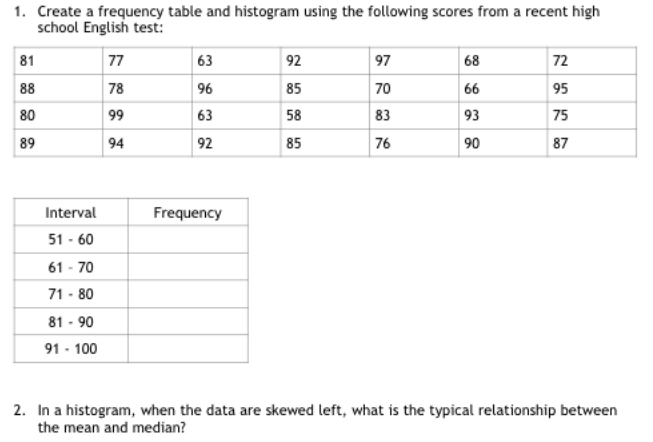

Now, the individual data is divided into bins and determines the bin frequency.To determine the height of the bars, we should also calculate the width. For this, you divide the number of values within one bin by the bin width. In our example with a bin that contains the throws from 30 to 34 meters, the width is 4 (because of the 4-meter range). In a histogram, the width of the bar makes it clear how big the respective bin is.Histogram/Frequency Distribution Table & Graph. Describe the shape of the histogram.To get a frequency distribution graph from the above frequency distribution table, first, select any cell within the table. Find the Standard Deviation of the Frequency Table.Here’s an example of this. Let’s assume you want to process the results of a throwing competition from a children’s sports day visually using a histogram. The people in charge naturally measure different throws here.

You’ll want to process these values visually. Confirm that the overall sum of counts in the frequency distribution table is equal to the number values in the dataset. Histograms Starting with a frequency distribution 1. Highlight the counts in the Frequency column of the frequency distribution table. Click on the Charts tab and select Column 2-D Clustered Column.So first I plot histogram of taxable income for year 3, including only taxpayers with z between 100000 with the bin width 10000. Now I want to create bin variable and frequency (the frequency count of the number of taxpayers in each bin) variable.


 0 kommentar(er)
0 kommentar(er)
